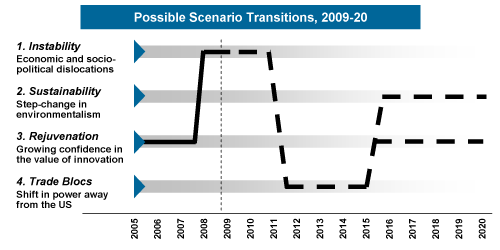At least, that’s what Jean-Baptiste Alphonse Karr thought in 1849. Last night I saw something that might suggest he was right but when I thought a little harder about it, well, I’m not so sure.
I was watching a TV broadcast about the celebration in Beijing of 60 years of communist government. It gave me a sense of déja vu as I watched the missiles and tanks parade through Tiananmen Square under the gaze of the key political figures of today’s China. It took me back to the early 60s, when, as a small boy, I would sit in front of our black & white valve TV as the BBC broadcast the Mayday parades from Red Square, Moscow. The ICBMs, the tanks, the politburo sternly arrayed on their balcony – how similar it all seemed. But then, how different China’s relationship is with the rest of the world, compared to the USSR of the 60’s.
Since the turn of the century we have been used to thinking of China as the engine of traded petrochemicals demand and so it has been. But that trade has become polarized around an axis that runs between the Middle East’s feedstock cost advantage and Asia’s (especially China’s) fixed cost advantage. The global trade position of the other regions has been eclipsed. The Middle East has geared up to provide competitive materials for Asia’s demand and its cost leading process sector – over 20 million annual tons of new ethylene capacity alone since 2003.
Twenty years ago, if I was looking to the price setting mechanisms in global petrochemicals, I’d have looked to the profitability of the marginal exports from the USGC. Now I’d find what I was looking for along that new axis.
But this year’s recession has sown the seeds of change and we need to look at the engine of China’s growth. Part of it is undoubtedly found at home. An increasingly affluent and aspirant public in the key urban centres is cranking up demand for goods which drives demand for bulk petrochemicals and especially polymers. In every commodity polymer sphere except for vinyls (which is another blogworthy topic) Chinese capacity still lags behind its demand by some way. As Middle East polymer capacity charged onwards in recent years, we in Europe kept our fingers crossed that Chinese GDP continued its march onward and upward. Why? Well a 1% shortfall in China meeting its GDP forecast meant several hundred thousand tons of commodity polymers from the Middle East looking for a home elsewhere. Europe looked kind of convenient, didn’t it?
However, the engine of much of China’s consumption growth is elsewhere – especially in the States. The USA (and everyone else, to be honest) has been absorbing the fruits of China’s low fixed cost process base for several years now. We like shiny things but more than that we like low cost, shiny things. There is now a serious mood swing in play. Larry Summers (head of the NEC and a man who undoubtedly has President Obama’s ear on matters of, not only economic, but also industrial strategy) said in a July interview with the FT that the new administration will be looking for ‘more civil engineering and less financial engineering’. I like to think he actually meant more chemical engineering but the message is clear. In future, USA will look to its own industrial base to meet its demand for ‘shiny things’, even if it costs more. To make his point clear Summers says ‘the USA’s role will no longer be that of the consumer/importer of last resort’.
This begins to smack of one of Kline’s four primary recovery models – that of an increasing emphasis on trade blocs ( see image below), not our favourite by any means but just as feasible as any other. So now European chemicals producers have more things to worry about:
- Will China’s trade to the US ever recover?
- Will China reduce its purchases from the Middle East long term?
- Will Middle East utilization rates fall?
- Will the Middle East target Europe more strongly?
I think we have to expect that the answers to the last two questions are ‘no’ and ‘probably’. However, there are factors in play that give some glimmers of hope. What are they? Well, call me. I’m always happy to talk – better still to listen. As for the next few years, ‘la même chose?’ – don’t be silly – after 2008/9, nothing will ever be quite the same…

by Glyn Johnson, Kline Director, Middle East, Eastern Europe.
Thank you for sharing!











